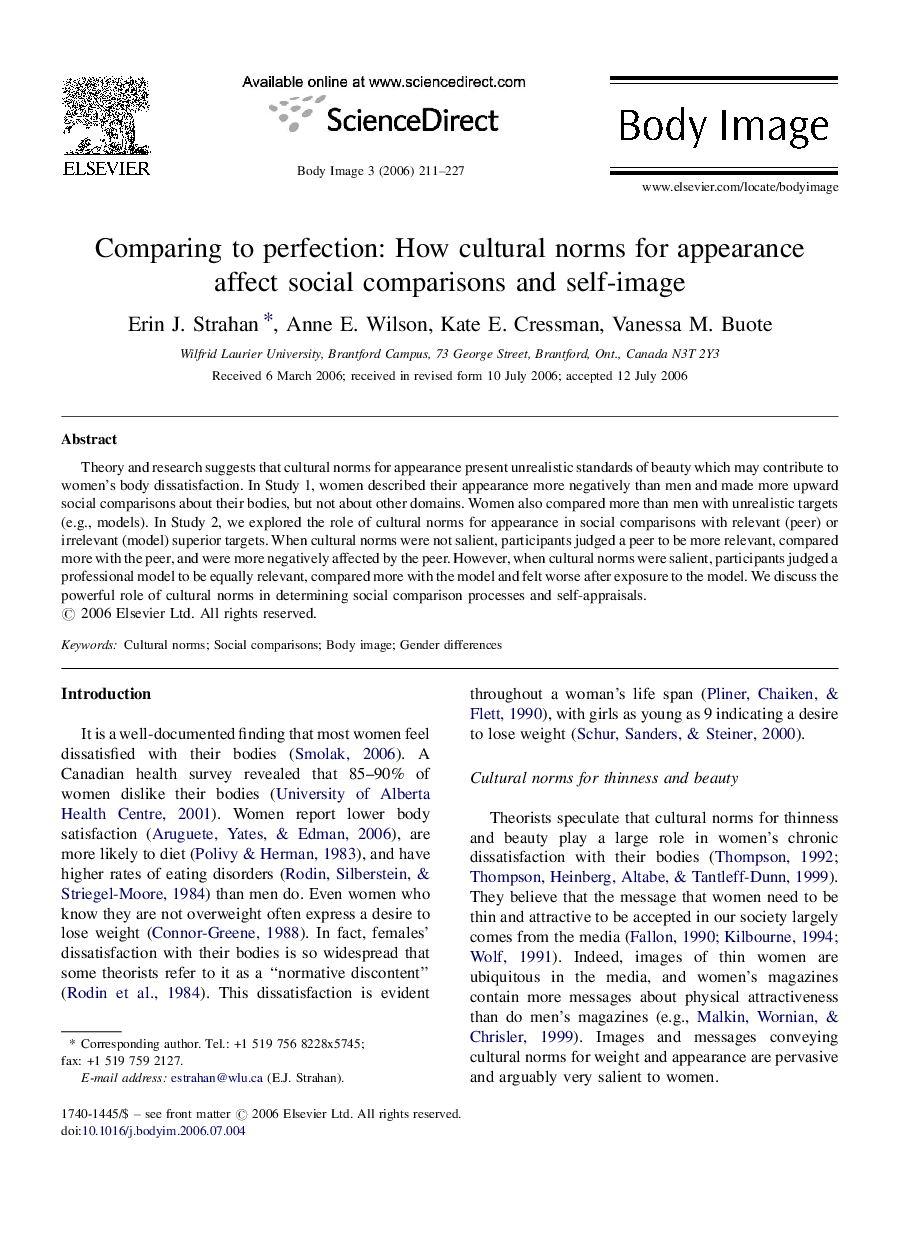| Article ID | Journal | Published Year | Pages | File Type |
|---|---|---|---|---|
| 903468 | Body Image | 2006 | 17 Pages |
Theory and research suggests that cultural norms for appearance present unrealistic standards of beauty which may contribute to women's body dissatisfaction. In Study 1, women described their appearance more negatively than men and made more upward social comparisons about their bodies, but not about other domains. Women also compared more than men with unrealistic targets (e.g., models). In Study 2, we explored the role of cultural norms for appearance in social comparisons with relevant (peer) or irrelevant (model) superior targets. When cultural norms were not salient, participants judged a peer to be more relevant, compared more with the peer, and were more negatively affected by the peer. However, when cultural norms were salient, participants judged a professional model to be equally relevant, compared more with the model and felt worse after exposure to the model. We discuss the powerful role of cultural norms in determining social comparison processes and self-appraisals.
